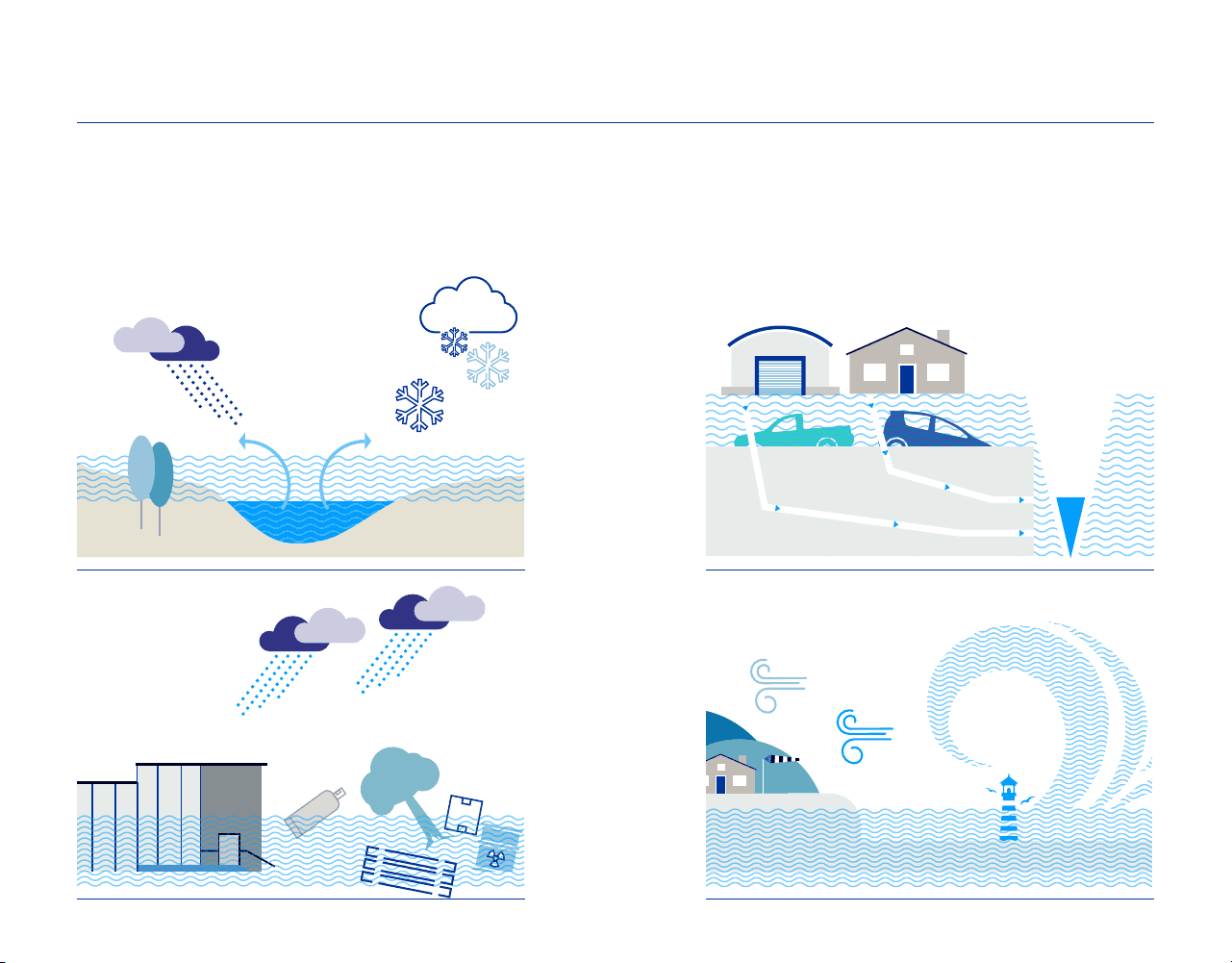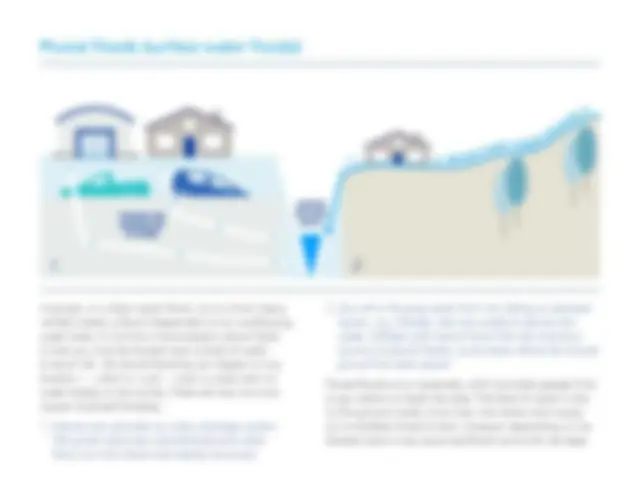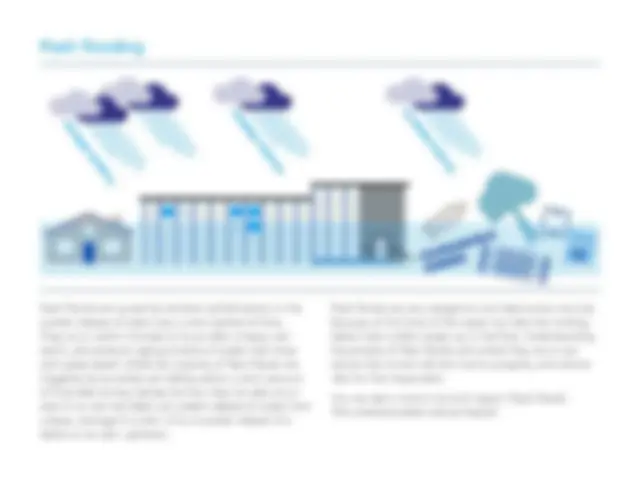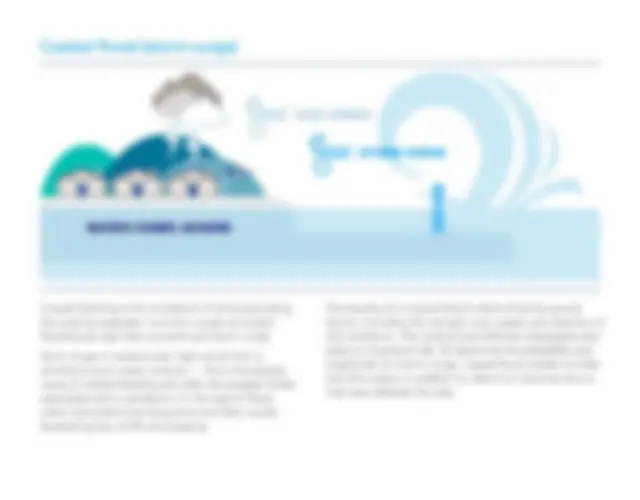





Study with the several resources on Docsity

Earn points by helping other students or get them with a premium plan


Prepare for your exams
Study with the several resources on Docsity

Earn points to download
Earn points by helping other students or get them with a premium plan
Community
Ask the community for help and clear up your study doubts
Discover the best universities in your country according to Docsity users
Free resources
Download our free guides on studying techniques, anxiety management strategies, and thesis advice from Docsity tutors
The four main types of floods: fluvial (river) floods, pluvial (surface water) floods, flash floods, and coastal (storm surge) floods. Each type has distinct characteristics and causes, and understanding them can help in planning and mitigating the impacts of floods.
Typology: Study notes
1 / 5

This page cannot be seen from the preview
Don't miss anything!




HIGH WINDS
STORM SURGE
A flood is an overflow of a large amount of water beyond its normal limits, especially over what is normally dry land. To plan for floods, you need to understand the type – or types – of flood you may face. Why? There are several different kinds of flood, and each one bears a different impact in terms of how it occurs, how it is forecast, the damage it causes, and type of protection you need. Shown here are the four main types of flood.
EXCESSIVE RAIN
NORMAL RIVER LEVEL
OVERFLOWING WATER STRAIN ONDRAINAGE SYSTEM
WATER DRAINSAWAY
SNOWFALL
EXTREME RAINFALL
DANGEROUS DEBRIS
EXTREME RAINFALL
WATER COMES ASHORE
A fluvial, or river flood, occurs when the water level in a river, lake or stream rises and overflows onto the surrounding banks, shores and neighboring land. The water level rise could be due to excessive rain or snowmelt.
The damage from a river flood can be widespread as the overflow affects smaller rivers downstream, which can cause dams and dikes to break and swamp nearby areas.
The severity of a river flood is determined by the duration and intensity of rainfall, i.e. the amount
(volume) of rainfall in an area. Other factors include soil water content due to previous rainfall, and the terrain surrounding the river system. In flatter areas, floodwater tends to rise more slowly and be shallower, and it often remains for days. In hilly or mountainous areas, floods can occur within minutes after a heavy rain, drain very quickly, and cause damage due to debris flow. To determine the probability of river flooding, models consider past precipitation, forecasted precipitation, current river levels, and well as soil and terrain conditions.
EXCESSIVE RAIN SNOWFALL
NORMAL RIVER LEVEL
OVERFLOWING WATER
Flash floods are caused by extreme rainfall events or the sudden release of water over a short period of time. They occur within minutes to hours after a heavy rain event, and produce raging torrents of water that move with great speed. While the majority of flash floods are triggered by torrential rain falling within a short amount of time (like during intense storms), they can also occur even if no rain has fallen via sudden release of water from a levee, damage to a dam or by a sudden release of a debris or ice dam upstream.
Flash floods are very dangerous and destructive not only because of the force of the water, but also the hurtling debris that is often swept up in the flow. Understanding the process of flash floods and where they occur can reduce the human toll and cost to property, and reduce risks for first responders. You can learn more in Zurich’s report ‘Flash Floods: The underestimated natural hazard’.
EXTREME RAINFALL EXTREME RAINFALL
EXTREME RAINFALL
Coastal flooding is the inundation of land areas along the coast by seawater. Common causes of coastal flooding are high tide, tsunamis and storm surge.
Storm surge is created when high winds from a windstorm push water onshore — this is the leading cause of coastal flooding and often the greatest threat associated with a windstorm. In this type of flood, water overwhelms low-lying land and often causes devastating loss of life and property.
The severity of a coastal flood is determined by several factors, including the strength, size, speed, and direction of the windstorm. The onshore and offshore topography also plays an important role. To determine the probability and magnitude of a storm surge, coastal flood models consider this information in addition to data from historical storms that have affected the area.